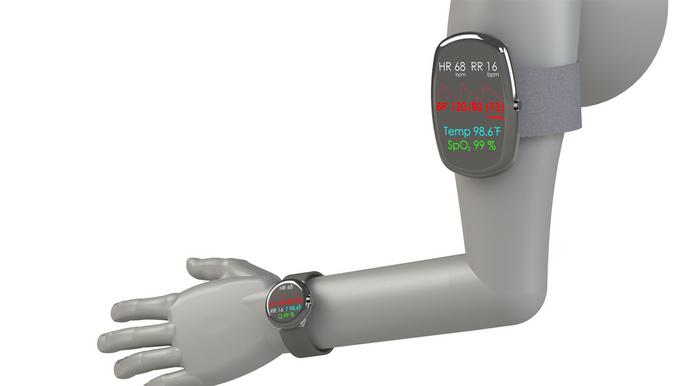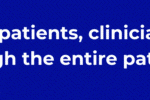
A team of Caltech researchers has figured out a method to noninvasively and continually measure blood pressure anywhere on the body with next to no disruption to the patient.
A device has been developed based on the new technique which shows promise for improved vital-sign monitoring at home, in hospitals, and remote locations.
The new and patented technique, called resonance sonomanometry, uses sound waves to gently stimulate resonance in an artery and then uses ultrasound imaging to measure the artery’s resonance frequency. The device then arrives at a true measurement of blood pressure.
In a small clinical study, the device, which gives patients a gentle buzzing sensation on the skin, produced results akin to those obtained using the standard-of-care blood pressure cuff.
A paper has been published on the technique in the journal PNAS Nexus.
Yaser Abu-Mostafa PhD, professor of electrical engineering and computer science and one of the authors of the paper, commented: “We ended up with a device that is able to measure the absolute blood pressure—not only the systolic and diastolic numbers that we are used to getting from blood pressure cuffs—but the full waveform.
AI health coach can lower blood pressure in patients with hypertension – study
“With this device you can measure blood pressure continuously and in different sites on the body, giving you much more information about the blood pressure of a person.”
“This team has been working for almost a decade, trying to build something that makes a difference, that is good enough to solve a real clinical problem,” says Aditya Rajagopal PhD, visiting associate in electrical engineering at Caltech, research adjunct assistant professor of biomedical engineering at USC, and a co-author of the new paper.
“Many groups, including tech giants like Apple and Google, have been working toward a solution like this, because it enables a spectrum of patient-monitoring possibilities from the hospital to the home. Our method broadens access to hospital-grade monitoring of blood pressure and cardiac health metrics.”
Waveforms
When having blood pressure taken with the traditional cuff, a nurse, doctor, or machine inflates the cuff that fits around the upper arm until blood can no longer flow, and then slowly releases the air from the cuff while listening for the sound that blood makes as it once again begins to flow.
The pressure in the cuff at that point corresponds to the blood pressure in the patient’s arteries. However, this technique has limitations, as it can only be performed periodically because it involves occluding a blood vessel, and can only collect data from the arm.
Physicians would very much like to have continuous readings that provide full waveforms of a patient’s blood pressure, and not only peripheral measurements from an arm but also central measurements from the chest and other parts of the body.
To get the full information they need, intensive care physicians and surgeons sometimes resort to inserting a catheter directly into the artery of critical patients (a practice known as placing an arterial line, or “a-line”). This is invasive and can be risky, but, until now, it has been the only way to get a continuous readout of true blood pressure. In some cases, such as problems with heart valves, full blood-pressure waveforms can provide physicians with diagnostic information that they cannot get any other way.
“There’s a lot of information in that waveform that is really valuable,” says Alaina Brinley Rajagopal, a visiting associate in electrical engineering at Caltech, an emergency medicine physician, and a co-author of the paper.
Other blood pressure devices developed over the last decade or two require a calibration step that emergency physicians simply do not have time for, she says: “I need to be able to put something on a patient and have it work immediately.”
The new device solves this problem. The current prototype, built and tested by a spin-off company called Esperto Medical, is housed in a transducer case smaller than a deck of cards and is mounted on an armband, though the researchers say it could eventually fit within a package the size of a watch or adhesive patch.
The team aims for the device to first be used in hospitals, where it would connect via wire to existing hospital monitors. It could mean that doctors would no longer have to weigh the risks of placing an a-line in order to get the continuous monitoring of real blood pressure for any patient.
Eventually, Brinley says their device could replace blood pressure cuffs as well: “Blood pressure cuffs only take one measurement as often as you run the cuff, so if you’re asking patients to monitor their blood pressure at home, they have to know how to use the device, they have to put it on, and they have to be motivated to record the information, and I would say a majority of patients do not do that.
“Having a device like ours, where it is just place and forget, you can wear it all day, and it can take however many measurements your provider wants, that would allow for better, precision dosing of medication.”
The inspiration
Thinking back to his first-year physics course at Caltech, Rajagopal remembered that his Physics1 textbook presented a canonical problem: You have a string under tension. How can you determine how taut the line is?
If you tweeze the string, you can relate the velocity at which vibration waves travel back and forth on the string to the resonance frequency in the string, which could give you your answer.
“I thought if I could stretch an artery in one direction and magically tweeze it and let it go, the ringing would give us the resonance frequency, which would get us to blood pressure,” says Rajagopal.
After six years of failures and returning to first principles, they finally had their guiding insight.
That is the underlying idea behind the new device. Like a guitar changing pitch as it is plucked while being tightened, the frequency at which an artery resonates when struck by sound waves changes depending on the pressure of the blood it contains.
This resonance frequency can be measured with ultrasound, providing a measure of blood pressure. This measurement requires three parameters—a measurement of the artery’s radius, the thickness of the artery’s walls, and the tension or energy in the skin of the artery.
With the physics worked out, there were still a lot of other details to be resolved—identifying the sound waves that would make arteries resonate, understanding how to measure that resonance, and then determining how to efficiently map that back to blood pressure, and, significantly, how to build a working system.
“Building that system required some extraordinarily bespoke technologies,” says Rajagopal. Caltech alumnus Raymond Jimenez was instrumental in building out that first system.
“The art form, which involved a lot of other Caltech alumni, was to put the physics answer into a very simple, practical instrument.”
The resulting Esperto device is small, noninvasive, relatively inexpensive, and it has an automated method for locating the patient’s blood vessel without needing to be physically repositioned. It also does not suffer from the problems that some blood pressure monitoring devices have, such as not being accurate for patients with low blood pressure or getting varying results depending on a patient’s skin tone.
It might not be a medical tricorder, but the team says the device solves the longstanding blood pressure monitoring problem. And Rajagopal says it is the product of a million small leaps. “Everything we’ve done is a product of the exact mistakes we’ve made over time,” he says, “and all the work that others have done too.”
“This work is emblematic of what makes Caltech so remarkable: solving a very hard problem by going back to first principles and understanding a physical phenomenon at the fundamental level,” says Fred Farina, Caltech’s Chief Innovation and Corporate Partnerships Officer.
“This approach, combined with the tenacity and entrepreneurial drive of the team, is our homemade recipe for societal impact and improving people’s lives.”





